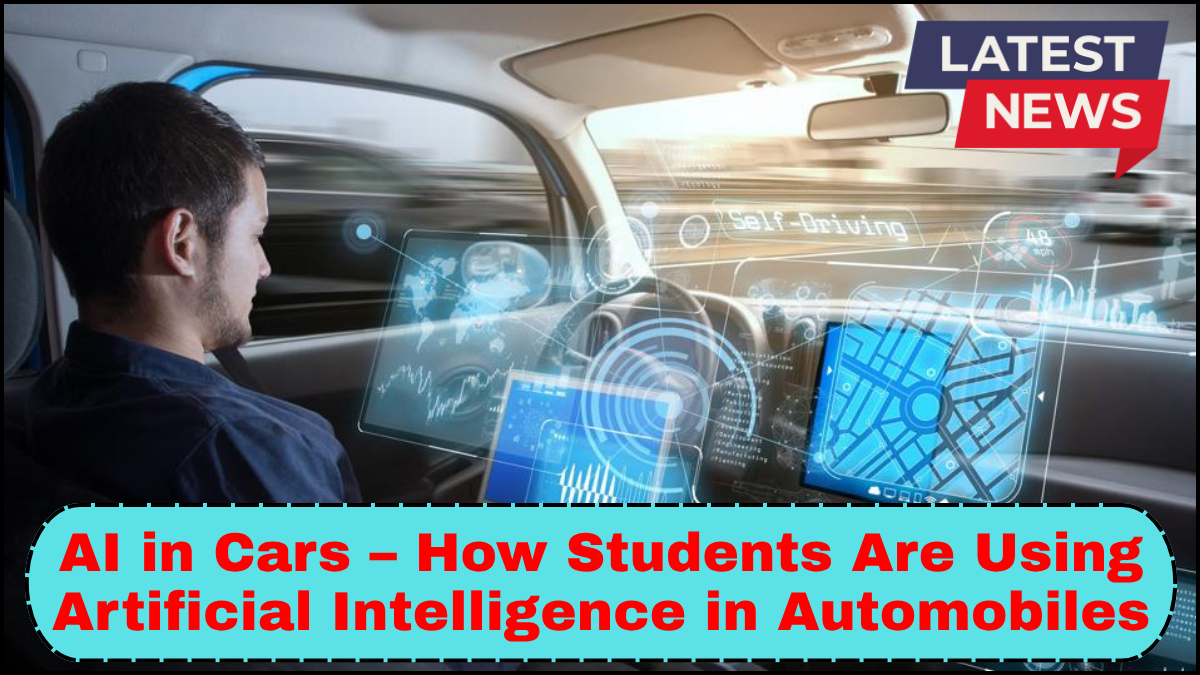Artificial Intelligence (AI) is driving a profound shift in the automotive industry. While major corporations invest billions into developing autonomous vehicles and smart car technologies, students around the world are making notable contributions that push the envelope. From college campuses to independent maker spaces, young innovators are applying AI in automobiles in ways that are not only creative but also transformative.

The Role of Students in Shaping AI-Driven Vehicles
Students are actively engaging in AI research and development, often through university labs, hackathons, and collaborative projects. What sets their work apart is their willingness to experiment with unconventional ideas and a natural inclination toward solving real-world problems.
For instance, at MIT and Stanford, student-led teams have built self-driving vehicle prototypes using open-source platforms like ROS (Robot Operating System) and machine learning models trained on real-time data. These projects often start with modest budgets but scale impressively due to the ingenuity and technical skills of student developers.
Applications of AI in Automobiles by Students
1. Autonomous Navigation Systems
Many student teams are building autonomous driving systems that rely on AI algorithms for lane detection, obstacle avoidance, and path planning. These systems typically integrate computer vision with LIDAR and GPS to understand and respond to dynamic driving environments. By training neural networks with diverse driving datasets, students improve the system’s ability to handle complex traffic scenarios.
2. Driver Assistance Features
AI is also being used by students to enhance driver safety through Advanced Driver-Assistance Systems (ADAS). Projects include drowsiness detection systems that monitor a driver’s facial cues and alert them in real time. Others focus on voice-activated controls, gesture recognition, and predictive maintenance alerts that use AI models to anticipate mechanical issues before they become critical.
3. Smart Car Interfaces
Students are exploring how AI can personalize the in-car experience. From adaptive climate control to AI-based infotainment systems that learn user preferences, these innovations are making cars more intuitive. Some student projects include AI assistants that provide contextual navigation tips, traffic updates, or even suggest alternate routes based on driving habits and historical data.
4. Environmental Monitoring and Efficiency
Sustainability is another area where students are applying AI in automobiles. AI models are being used to monitor emissions, optimize fuel consumption, and switch between hybrid modes in electric vehicles. These systems often use real-time environmental data to dynamically adjust engine performance or route selection.
Collaboration and Open Innovation
Students often work in open-source communities or participate in global competitions like the Formula Student Autonomous or the SAE AutoDrive Challenge. These platforms encourage innovation and expose students to real-world challenges. Industry partners frequently scout these events to discover new talent and technologies.
Moreover, startups founded by students have developed smart car platforms that integrate with existing vehicles, offering AI-powered upgrades such as lane assist, smart parking, and collision warnings. These aftermarket solutions are affordable and make AI in automobiles more accessible to the general public.
The Future Outlook
As AI becomes more embedded in transportation infrastructure, the role of student innovators will only grow. Educational institutions are expanding AI-focused automotive programs, and partnerships between universities and automotive firms are becoming more common. With access to better tools, datasets, and mentorship, students are well-positioned to lead the next wave of smart car development.
FAQs
Q1: What is the role of AI in automobiles?
AI is used to power autonomous driving, enhance driver safety through ADAS, personalize in-car experiences, and improve vehicle efficiency.
Q2: How are students contributing to smart cars?
Students contribute through university research, hackathons, and startup ventures by developing AI-driven systems for navigation, safety, and user interface enhancements.
Q3: What tools do students use to implement AI in vehicles?
Common tools include Python, TensorFlow, OpenCV, ROS, and Arduino platforms. They also use simulation software like CARLA for testing.
Q4: Can student-built AI systems be integrated into real vehicles?
Yes. Many student innovations have been successfully tested in real vehicles, especially in controlled environments or as part of retrofit kits.
Q5: Are student innovations influencing the automotive industry?
Absolutely. Many automotive companies partner with universities to tap into student talent and often adopt or invest in their innovations.
click here to learn more